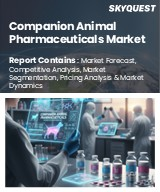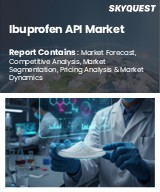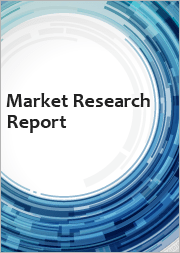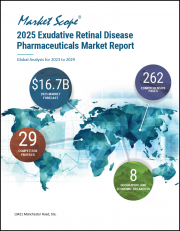
|
시장보고서
상품코드
1679414
의약품 시장 규모, 점유율, 동향 분석 보고서 : 분자 유형별, 제품별, 유형별, 질환별, 연령층별, 투여 경로별, 유통 채널별, 지역별, 부문별 예측(2025-2030년)Pharmaceutical Market Size, Share & Trends Analysis Report By Molecule Type, By Product, By Type, By Disease, By Age Group, By Route Of Administration, By Distribution Channel, By Region, And Segment Forecasts, 2025 - 2030 |
||||||
의약품 시장 성장과 동향
Grand View Research, Inc.의 최신 보고서에 따르면, 세계 의약품 시장 규모는 2030년까지 2조 3,504억 3,000만 달러에 달할 것으로 추정되며, 2025-2030년 동안 6.12%의 CAGR로 성장할 것으로 예상됩니다.
의약품 시장의 성장은 만성질환의 유병률 증가와 새로운 치료법 개발에 대한 수요 증가에 기인하며, National Council on Aging에 따르면 노인의 약 95%가 적어도 한 가지 이상의 만성질환을 앓고 있으며, 약 80%가 두 가지 이상의 만성질환을 앓고 있는 것으로 추정됩니다. 추정되고 있습니다. 또한, 당뇨병, 관절염, 심장병과 같은 만성질환은 노인들에게 불균형적으로 영향을 미치고 있습니다.
예방, 조기발견, 집중치료, 효과적인 치료를 위해서는 인식이 중요합니다. 질병과 그 증상을 인지하고 있는 사람들은 검진, 검사, 건강검진 등 예방 조치를 취하는 경향이 강합니다. 다양한 질병에 대한 인식이 높아지는 것도 제약 부문을 견인하는 요소입니다. 암이나 당뇨병과 같은 질병에 대한 인식이 높아짐에 따라 질병이 발생했을 때 치료를 받을 가능성이 높아졌습니다. 공공 기관과 민간 단체는 국민들에게 인식을 확산하고 교육하기 위해 다양한 노력을 기울이고 있습니다. 또한, 많은 사람들이 처방약 비용을 보장하는 보험에 가입하게 되면서 의약품 수요 증가에 기여하고 있습니다.
또한, 새로운 치료법 개발의 기술 발전으로 인해 의약품 수요는 전 세계적으로 크게 증가하고 있습니다. 제약 산업은 연구개발뿐만 아니라 제품 판매 및 유통에도 전례 없는 속도로 투자하고 있습니다. 이 산업은 사람들의 건강에 명확하고 직접적으로 접근하는 데 중점을 두고 있습니다. 제약 산업은 환자 치료와 지역 사회 발전에 필수적이며, 수많은 생명을 구하는 치료법을 제공하고, 일자리를 창출하며, 세계 경제에 기여하고 있습니다.
백신 제조, 발효 공정, 생명공학에는 박테리아, 바이러스 등 많은 생물학적 제제가 사용되고 있습니다. 이 시장은 거대 제약사, 중견 특수 제약사, 가상 제약사, 제네릭 제조업체, 소규모 바이오테크놀러지 및 바이오의약품 기업 등 다양한 기업들로 구성되어 있습니다. 또한, 다양한 치료 제제의 개발 및 제형화에 관여하는 주요 진입 기업들은 신약 개발 및 시장 경쟁 유지를 위해 공동 연구 및 제휴에 주력하고 있습니다.
또한, 증상 예방 및 치료에 대한 수요 증가에 대응하기 위해 여러 기업이 새로운 의약품 개발에 나서고 있습니다. 예를 들어, 2023년 4월 F. Hoffman-La Roche는 2022년 1월 FDA 승인을 받은 자사의 습성 연령관련 황반변성 치료제 Vabysmo가 2023년 1분기에 약 5억 달러의 매출을 기록했다고 발표했습니다. 이 치료제의 매출은 전년 동기 대비 500% 이상 증가하여 다발성 경화증 치료제 오크레바스(Ocrevus), 혈우병 치료제 헴리브라(Hemlibra) 등 경쟁 약물을 능가했습니다. 또한, NovartisAG는 2023년 7월 미국 FDA로부터 레쿠비오(성분명: 인클리시란)에 대해 심장질환 위험이 높은 LDL-C 고혈당 환자 치료를 추가하는 적응증 확대 승인을 획득했습니다.
의약품 시장 보고서 하이라이트
- 재래식 의약품(저분자)이 2024년 매출 점유율 54.74%로 시장을 장악했습니다.
- 브랜드 부문이 의약품 시장을 독점하고 2024년 매출 점유율은 86.76%에 달했습니다.
- 만성질환 치료에 대한 수요 증가, 의약품 개발의 기술 발전, 의료 접근성 향상으로 인해 2024년 처방약 부문이 86.76%의 매출 점유율로 시장을 주도했습니다.
- 암 부문은 2024년 18.06%의 매출 점유율로 시장을 장악했습니다.
- 경구제 부문은 편의성, 환자 순응도, 비용 효율성으로 인해 2024년 57.53%의 매출 점유율로 펩타이드 약물 복합제 시장을 장악했습니다.
- 펩타이드 약물 복합체 시장은 성인 시장이 2024년 63.84%의 매출 점유율을 차지했습니다.
- 2024년 매출 점유율은 53.53%로 병원 약국 부문이 펩타이드 결합체 시장을 독점했습니다.
목차
제1장 조사 방법과 범위
제2장 주요 요약
제3장 의약품 시장 변수, 동향, 범위
- 상부 시장 전망
- 보조 시장 전망
- 시장 역학
- 시장 성장 촉진요인 분석
- 시장 성장 억제요인 분석
- 도파민 작용제 분석 툴
- Porters 분석
- PESTEL 분석
- 파이프라인 분석
- 단계 1
- 단계 2
- 단계 3
제4장 의약품 시장 : 의약품별, 추정·동향 분석
- 의약품 시장 : 의약품 부문 대시보드
- 의약품 시장 : 의약품 변동 분석, 100만 달러, 2024년과 2030년
- 생물학적 제제와 바이오시밀러(고분자)
- 단클론항체
- 백신
- 세포 및 유전자 치료
- 기타
- 기존 의약품(저분자)
제5장 의약품 시장 : 유형별, 추정·동향 분석
- 의약품 시장 : 유형 부문 대시보드
- 의약품 시장 : 유형 변동 분석, 100만 달러, 2024년과 2030년
- 처방약
- 시판약
제6장 의약품 시장 : 제품별, 추정·동향 분석
- 의약품 시장 : 제품 부문 대시보드
- 의약품 시장 : 제품 변동 분석, 100만 달러, 2024년과 2030년
- 브랜드
- 제네릭
제7장 의약품 시장 : 질병별, 추정·동향 분석
- 의약품 시장 : 질환 부문 대시보드
- 의약품 시장 : 질병 변동 분석, 100만 달러, 2024년과 2030년
- 심혈관질환
- 암
- 당뇨병
- 감염증
- 신경질환
- 호흡기질환
- 자가면역질환
- 정신질환
- 위장장애
- 여성 건강 질환
- 유전성 질환과 희귀 유전성 질환
- 피부질환
- 비만
- 신장질환
- 간질환
- 혈액질환
- 눈질환
- 불임
- 내분비 장애
- 알레르기
- 기타
제8장 의약품 시장 : 투여 경로별, 추정·동향 분석
- 의약품 시장 : 투여 경로 부문 대시보드
- 의약품 시장 : 투여 경로 변동 분석, 100만 달러, 2024년과 2030년
- 경구
- 정제
- 캡슐
- 현탁액
- 기타
- 국소
- 비경구
- 정맥내
- 근육내
- 흡입
- 기타
제9장 의약품 시장 : 연령층별, 추정·동향 분석
- 의약품 시장 : 연령층 부문 대시보드
- 의약품 시장 : 연령층 변동 분석, 100만 달러, 2024년과 2030년
- 유아와 청소년
- 성인
- 노인
제10장 의약품 시장 : 유통 채널별, 추정·동향 분석
- 의약품 시장 : 유통 채널 부문 대시보드
- 의약품 시장 : 유통 채널 변동 분석, 100만 달러, 2024년과 2030년
- 병원 약국
- 소매 약국
- 기타
제11장 의약품 시장 : 지역별, 추정·동향 분석
- 의약품 시장 점유율, 지역별, 2024년과 2030년, 100만 달러
- 북미
- 미국
- 캐나다
- 멕시코
- 유럽
- 영국
- 독일
- 프랑스
- 이탈리아
- 스페인
- 덴마크
- 스웨덴
- 노르웨이
- 아시아태평양
- 일본
- 중국
- 인도
- 호주
- 한국
- 태국
- 라틴아메리카
- 브라질
- 아르헨티나
- 중동 및 아프리카
- 남아프리카공화국
- 사우디아라비아
- 아랍에미리트
- 쿠웨이트
제12장 경쟁 구도
- 주요 시장 진출 기업의 최근 동향과 영향 분석
- 기업 분류
- 참여자 개요
- 제품 벤치마크
- 기업 시장 점유율 분석, 2024년
- 기업 개요
- F. Hoffmann-La Roche Ltd
- Novartis AG
- AbbVie Inc.
- Johnson & Johnson Services, Inc.
- Merck & Co., Inc.
- Pfizer Inc.
- Bristol-Myers Squibb Company
- Sanofi
- GlaxoSmithKline plc.
- AstraZeneca
- Takeda Pharmaceutical Co., Ltd.
제13장 결론
ksm 25.04.16Pharmaceutical Market Growth & Trends:
The global pharmaceutical market size is estimated to reach USD 2,350.43 billion by 2030, registering to grow at a CAGR of 6.12% from 2025 to 2030 according to a new report by Grand View Research, Inc. The growth of the pharmaceuticals market is attributable to the increasing prevalence of chronic diseases, leading to a growing need for developing novel therapeutics. According to the National Council on Aging, it is estimated that approximately 95% of the older population has at least one chronic ailment, and around 80% has two or more. Moreover, chronic diseases such as diabetes, arthritis, and heart disease disproportionately affect the elderly population.
Awareness is critical for prevention, early detection, focused therapy, and effective treatment. People aware of an illness and its symptoms are more inclined to take preventative measures, such as screenings, tests, and check-ups. The increased awareness of various diseases is another element driving the pharmaceutical space. As people are now aware of diseases such as cancer and diabetes, they are more likely to seek treatment if they develop those conditions. A number of initiatives are taken by public and private organizations to spread awareness and educate the population. Furthermore, many people now have insurance policies that cover prescription drug expenses, contributing to increased pharmaceutical demand.
Moreover,the demand for pharmaceuticals is significantly increasing globally due to advancements in technology in the development of novel therapeutics. The pharmaceutical industry invests at an unprecedented rate in research and development, as well as product sales and distribution. The industry focuses on distinctly and directly addressing people's health. The pharmaceuticals industry is critical to patient care and community development and provides numerous life-saving treatments, generates employment, and contributes to the world economy.
Many biological agents, such as bacteria and viruses, are used in vaccine manufacturing, fermentation processes, and biotechnology. The market is made up of a diverse spectrum of companies, including giant pharma, mid-sized specialty, virtual pharma, generic manufacturers, and small biotechnology and biopharmaceutical organizations. Furthermore, key players involved in developing and formulating various therapeutic formulations are focusing on collaborations and partnerships to develop novel medications and maintain their competitive position in the market.
Moreover, several players are involved in developing novel pharmaceuticals to meet the rising demand for the prevention and treatment of conditions. For instance, in April 2023, F. Hoffmann-La Roche Ltd. announced that its wet age-related macular degeneration drug, Vabysmo, which received FDA approval in January 2022, brought around USD 500 million during the first quarter of 2023. The drug's sales increased by more than 500% year-on-year, beating competitors such as multiple sclerosis treatment Ocrevus and the hemophilia medication Hemlibra. Moreover, in July 2023, Novartis AG received U.S. FDA approval for an expanded indication of Leqvio (inclisiran), in order to include treatment of patients with high LDL-C who are at an increased risk of heart diseases.
Pharmaceutical Market Report Highlights:
- The Conventional drugs (small molecules) dominated the market with a revenue share of 54.74% in 2024.
- The branded segment dominated the pharmaceutical market with a revenue share of 86.76% in 2024.
- The prescription segment dominated the market with a revenue share of 86.76% in 2024 due to rising demand for chronic disease treatments, technological advancements in drug development, and improved healthcare access.
- The cancer segment dominated the market with a revenue share of 18.06% in 2024.
- The oral segment dominated the peptide drug conjugates market with a revenue share of 57.53% in 2024 due to its convenience, patient compliance, and cost-effectiveness.
- The adults segment dominated the peptide drug conjugates market with a revenue share of 63.84% in 2024.
- The hospital pharmacy segment dominated the peptide drug conjugates market with a revenue share of 53.53% in 2024
Table of Contents
Chapter 1. Methodology and Scope
- 1.1. Market Segmentation and Scope
- 1.2. Market Definitions
- 1.3. Research Methodology
- 1.3.1. Information Procurement
- 1.3.2. Information or Data Analysis
- 1.3.3. Market Formulation & Data Visualization
- 1.3.4. Data Validation & Publishing
- 1.4. Research Scope and Assumptions
- 1.4.1. List of Data Sources
Chapter 2. Executive Summary
- 2.1. Market Outlook
- 2.2. Segment Outlook
- 2.3. Competitive Insights
Chapter 3. Pharmaceutical Market Variables, Trends, & Scope
- 3.1. Parent Market Outlook
- 3.2. Ancillary Market Outlook
- 3.3. Market Dynamics
- 3.3.1. Market Drivers Analysis
- 3.3.1.1. Advancement in therapeutics and robust product pipeline
- 3.3.1.2. Rise in pharmaceutical r&d spending
- 3.3.1.3. Rise in pharmaceutical r&d spending
- 3.3.2. Market Restraints Analysis
- 3.3.2.1. Patent expiration of key market drugs
- 3.3.2.2. Pricing pressures on bio/pharmaceutical companies
- 3.3.2.3. Stringent regulatory scenario
- 3.3.1. Market Drivers Analysis
- 3.4. Dopamine Agonist Analysis Tools
- 3.4.1. Porter's Analysis
- 3.4.1.1. Bargaining power of the suppliers
- 3.4.1.2. Bargaining power of the buyers
- 3.4.1.3. Threats of substitution
- 3.4.1.4. Threats from new entrants
- 3.4.1.5. Competitive rivalry
- 3.4.2. PESTEL Analysis
- 3.4.2.1. Political landscape
- 3.4.2.2. Economic and Social landscape
- 3.4.2.3. Technological landscape
- 3.4.2.4. Environmental landscape
- 3.4.2.5. Legal landscape
- 3.4.1. Porter's Analysis
- 3.5. Pipeline Analysis
- 3.5.1. Phase 1
- 3.5.2. Phase 2
- 3.5.3. Phase 3
Chapter 4. Pharmaceutical Market: By Drug Estimates & Trend Analysis
- 4.1. Pharmaceutical Market: Drug Segment Dashboard
- 4.2. Pharmaceutical Market: By Drug Movement Analysis, USD Million, 2024 & 2030
- 4.3. Biologics & Biosimilars (Large Molecules)
- 4.3.1. Market Revenue Estimates and Forecasts, 2018 - 2030 (USD Million)
- 4.3.2. Monoclonal Antibodies
- 4.3.2.1. Market Estimates and Forecasts, 2018 - 2030 (USD Million)
- 4.3.3. Vaccines
- 4.3.3.1. Market Estimates and Forecasts, 2018 - 2030 (USD Million)
- 4.3.4. Cell & Gene Therapy
- 4.3.4.1. Market Estimates and Forecasts, 2018 - 2030 (USD Million)
- 4.3.5. Others
- 4.3.5.1. Market Estimates and Forecasts, 2018 - 2030 (USD Million)
- 4.4. Conventional Drugs (Small Molecules)
- 4.4.1. Market Estimates and Forecasts, 2018 - 2030 (USD Million)
Chapter 5. Pharmaceutical Market: Type Estimates & Trend Analysis
- 5.1. Pharmaceutical Market: Type Segment Dashboard
- 5.2. Pharmaceutical Market: By Product Movement Analysis, USD Million, 2024 & 2030
- 5.3. Prescription
- 5.3.1. Market Estimates and Forecasts, 2018 - 2030 (USD Million)
- 5.4. OTC
- 5.4.1. Market Estimates and Forecasts, 2018 - 2030 (USD Million)
Chapter 6. Pharmaceutical Market: Product Estimates & Trend Analysis
- 6.1. Pharmaceutical Market: Product Segment Dashboard
- 6.2. Pharmaceutical Market: By Product Movement Analysis, USD Million, 2024 & 2030
- 6.3. Branded
- 6.3.1. Market Estimates and Forecasts, 2018 - 2030 (USD Million)
- 6.4. Generics
- 6.4.1. Market Estimates and Forecasts, 2018 - 2030 (USD Million)
Chapter 7. Pharmaceutical Market: Disease Estimates & Trend Analysis
- 7.1. Pharmaceutical Market: Disease Segment Dashboard
- 7.2. Pharmaceutical Market: By Disease Movement Analysis, USD Million, 2024 & 2030
- 7.3. Cardiovascular diseases
- 7.3.1. Market Estimates and Forecasts, 2018 - 2030 (USD Million)
- 7.4. Cancer
- 7.4.1. Market Estimates and Forecasts, 2018 - 2030 (USD Million)
- 7.5. Diabetes
- 7.5.1. Market Estimates and Forecasts, 2018 - 2030 (USD Million)
- 7.6. Infectious diseases
- 7.6.1. Market Estimates and Forecasts, 2018 - 2030 (USD Million)
- 7.7. Neurological disorders
- 7.7.1. Market Estimates and Forecasts, 2018 - 2030 (USD Million)
- 7.8. Respiratory diseases
- 7.8.1. Market Estimates and Forecasts, 2018 - 2030 (USD Million)
- 7.9. Autoimmune diseases
- 7.9.1. Market Estimates and Forecasts, 2018 - 2030 (USD Million)
- 7.10. Mental health disorders
- 7.10.1. Market Estimates and Forecasts, 2018 - 2030 (USD Million)
- 7.11. Gastrointestinal disorders
- 7.11.1. Market Estimates and Forecasts, 2018 - 2030 (USD Million)
- 7.12. Women's Health Diseases
- 7.12.1. Market Estimates and Forecasts, 2018 - 2030 (USD Million)
- 7.13. Genetic and Rare genetic diseases
- 7.13.1. Market Estimates and Forecasts, 2018 - 2030 (USD Million)
- 7.14. Dermatological conditions
- 7.14.1. Market Estimates and Forecasts, 2018 - 2030 (USD Million)
- 7.15. Obesity
- 7.15.1. Market Estimates and Forecasts, 2018 - 2030 (USD Million)
- 7.16. Renal diseases
- 7.16.1. Market Estimates and Forecasts, 2018 - 2030 (USD Million)
- 7.17. Liver conditions
- 7.17.1. Market Estimates and Forecasts, 2018 - 2030 (USD Million)
- 7.18. Hematological disorders
- 7.18.1. Market Estimates and Forecasts, 2018 - 2030 (USD Million)
- 7.19. Eye conditions
- 7.19.1. Market Estimates and Forecasts, 2018 - 2030 (USD Million)
- 7.20. Infertility conditions
- 7.20.1. Market Estimates and Forecasts, 2018 - 2030 (USD Million)
- 7.21. Endocrine disorders
- 7.21.1. Market Estimates and Forecasts, 2018 - 2030 (USD Million)
- 7.22. Allergies
- 7.22.1. Market Estimates and Forecasts, 2018 - 2030 (USD Million)
- 7.23. Others
- 7.23.1. Market Estimates and Forecasts, 2018 - 2030 (USD Million)
Chapter 8. Pharmaceutical Market: Route of Administration Estimates & Trend Analysis
- 8.1. Pharmaceutical Market: Route of Administration Segment Dashboard
- 8.2. Pharmaceutical Market: By Route of Administration Movement Analysis, USD Million, 2024 & 2030
- 8.3. Oral
- 8.3.1. Market Estimates and Forecasts, 2018 - 2030 (USD Million)
- 8.3.2. Tablets
- 8.3.3. Capsules
- 8.3.4. Suspensions
- 8.3.5. Other
- 8.4. Topical
- 8.4.1. Market Estimates and Forecasts, 2018 - 2030 (USD Million)
- 8.5. Parenteral
- 8.5.1. Market Estimates and Forecasts, 2018 - 2030 (USD Million)
- 8.5.2. Intravenous
- 8.5.3. Intramuscular
- 8.6. Inhalations
- 8.6.1. Market Estimates and Forecasts, 2018 - 2030 (USD Million)
- 8.7. Other Routes of Administration
- 8.7.1. Market Estimates and Forecasts, 2018 - 2030 (USD Million)
Chapter 9. Pharmaceutical Market: Age Group Estimates & Trend Analysis
- 9.1. Pharmaceutical Market: Age Group Segment Dashboard
- 9.2. Pharmaceutical Market: By Age Group Movement Analysis, USD Million, 2024 & 2030
- 9.3. Children & Adolescents
- 9.3.1. Market Estimates and Forecasts, 2018 - 2030 (USD Million)
- 9.4. Adults
- 9.4.1. Market Estimates and Forecasts, 2018 - 2030 (USD Million)
- 9.5. Geriatric
- 9.5.1. Market Estimates and Forecasts, 2018 - 2030 (USD Million)
Chapter 10. Pharmaceutical Market: Distribution Channel Estimates & Trend Analysis
- 10.1. Pharmaceutical Market: Distribution Channel Segment Dashboard
- 10.2. Pharmaceutical Market: By Distribution Channel Movement Analysis, USD Million, 2024 & 2030
- 10.3. Hospital Pharmacy
- 10.3.1. Market Estimates and Forecasts, 2018 - 2030 (USD Million)
- 10.4. Retail Pharmacy
- 10.4.1. Market Estimates and Forecasts, 2018 - 2030 (USD Million)
- 10.5. Others
- 10.5.1. Market Estimates and Forecasts, 2018 - 2030 (USD Million)
Chapter 11. Pharmaceutical Market: Regional Estimates & Trend Analysis
- 11.1. Pharmaceutical Market Share, By Region, 2024 & 2030, USD Million
- 11.2. North America
- 11.2.1. North America Pharmaceutical Market Estimates and Forecasts, 2018 - 2030 (USD Million)
- 11.2.2. U.S.
- 11.2.2.1. Key Country Dynamics
- 11.2.2.2. Target Disease Prevalence
- 11.2.2.3. Regulatory Framework
- 11.2.2.4. Reimbursement Framework
- 11.2.2.5. U.S. Pharmaceutical Market Estimates and Forecasts, 2018 - 2030 (USD Million)
- 11.2.3. Canada
- 11.2.3.1. Key Country Dynamics
- 11.2.3.2. Target Disease Prevalence
- 11.2.3.3. Regulatory Framework
- 11.2.3.4. Reimbursement Framework
- 11.2.3.5. U.S. Pharmaceutical Market Estimates and Forecasts, 2018 - 2030 (USD Million)
- 11.2.4. Mexico
- 11.2.4.1. Key Country Dynamics
- 11.2.4.2. Target Disease Prevalence
- 11.2.4.3. Regulatory Framework
- 11.2.4.4. Reimbursement Framework
- 11.2.4.5. Mexico Pharmaceutical Market Estimates and Forecasts, 2018 - 2030 (USD Million)
- 11.3. Europe
- 11.3.1. Europe Pharmaceutical Market Estimates and Forecasts, 2018 - 2030 (USD Million)
- 11.3.2. UK
- 11.3.2.1. Key Country Dynamics
- 11.3.2.2. Target Disease Prevalence
- 11.3.2.3. Regulatory Framework
- 11.3.2.4. Reimbursement Framework
- 11.3.2.5. Uk Pharmaceutical Market Estimates and Forecasts, 2018 - 2030 (USD Million)
- 11.3.3. Germany
- 11.3.3.1. Key Country Dynamics
- 11.3.3.2. Target Disease Prevalence
- 11.3.3.3. Regulatory Framework
- 11.3.3.4. Reimbursement Framework
- 11.3.3.5. Germany Pharmaceutical Market Estimates and Forecasts, 2018 - 2030 (USD Million)
- 11.3.4. France
- 11.3.4.1. Key Country Dynamics
- 11.3.4.2. Target Disease Prevalence
- 11.3.4.3. Regulatory Framework
- 11.3.4.4. Reimbursement Framework
- 11.3.4.5. France Pharmaceutical Market Estimates and Forecasts, 2018 - 2030 (USD Million)
- 11.3.5. Italy
- 11.3.5.1. Key Country Dynamics
- 11.3.5.2. Target Disease Prevalence
- 11.3.5.3. Regulatory Framework
- 11.3.5.4. Reimbursement Framework
- 11.3.5.5. Italy Pharmaceutical Market Estimates and Forecasts, 2018 - 2030 (USD Million)
- 11.3.6. Spain
- 11.3.6.1. Key Country Dynamics
- 11.3.6.2. Target Disease Prevalence
- 11.3.6.3. Regulatory Framework
- 11.3.6.4. Reimbursement Framework
- 11.3.6.5. Spain Pharmaceutical Market Estimates and Forecasts, 2018 - 2030 (USD Million)
- 11.3.7. Denmark
- 11.3.7.1. Key Country Dynamics
- 11.3.7.2. Target Disease Prevalence
- 11.3.7.3. Regulatory Framework
- 11.3.7.4. Reimbursement Framework
- 11.3.7.5. Denmark Pharmaceutical Market Estimates and Forecasts, 2018 - 2030 (USD Million)
- 11.3.8. Sweden
- 11.3.8.1. Key Country Dynamics
- 11.3.8.2. Target Disease Prevalence
- 11.3.8.3. Regulatory Framework
- 11.3.8.4. Reimbursement Framework
- 11.3.8.5. Sweden Pharmaceutical Market Estimates and Forecasts, 2018 - 2030 (USD Million)
- 11.3.9. Norway
- 11.3.9.1. Key Country Dynamics
- 11.3.9.2. Target Disease Prevalence
- 11.3.9.3. Regulatory Framework
- 11.3.9.4. Reimbursement Framework
- 11.3.9.5. Norway Pharmaceutical Market Estimates and Forecasts, 2018 - 2030 (USD Million)
- 11.4. Asia Pacific
- 11.4.1. Asia Pacific Pharmaceutical Market Estimates and Forecasts, 2018 - 2030 (USD Million)
- 11.4.2. Japan
- 11.4.2.1. Key Country Dynamics
- 11.4.2.2. Target Disease Prevalence
- 11.4.2.3. Regulatory Framework
- 11.4.2.4. Reimbursement Framework
- 11.4.2.5. Japan Pharmaceutical Market Estimates and Forecasts, 2018 - 2030 (USD Million)
- 11.4.3. China
- 11.4.3.1. Key Country Dynamics
- 11.4.3.2. Target Disease Prevalence
- 11.4.3.3. Regulatory Framework
- 11.4.3.4. Reimbursement Framework
- 11.4.3.5. China Pharmaceutical Market Estimates and Forecasts, 2018 - 2030 (USD Million)
- 11.4.4. India
- 11.4.4.1. Key Country Dynamics
- 11.4.4.2. Target Disease Prevalence
- 11.4.4.3. Regulatory Framework
- 11.4.4.4. Reimbursement Framework
- 11.4.4.5. India Pharmaceutical Market Estimates and Forecasts, 2018 - 2030 (USD Million)
- 11.4.5. Australia
- 11.4.5.1. Key Country Dynamics
- 11.4.5.2. Target Disease Prevalence
- 11.4.5.3. Regulatory Framework
- 11.4.5.4. Reimbursement Framework
- 11.4.5.5. Australia Pharmaceutical Market Estimates and Forecasts, 2018 - 2030 (USD Million)
- 11.4.6. South Korea
- 11.4.6.1. Key Country Dynamics
- 11.4.6.2. Target Disease Prevalence
- 11.4.6.3. Regulatory Framework
- 11.4.6.4. Reimbursement Framework
- 11.4.6.5. South Korea Pharmaceutical Market Estimates and Forecasts, 2018 - 2030 (USD Million)
- 11.4.7. Thailand
- 11.4.7.1. Key Country Dynamics
- 11.4.7.2. Target Disease Prevalence
- 11.4.7.3. Regulatory Framework
- 11.4.7.4. Reimbursement Framework
- 11.4.7.5. Thailand Pharmaceutical Market Estimates and Forecasts, 2018 - 2030 (USD Million)
- 11.5. Latin America
- 11.5.1. Latin America Pharmaceutical Market Estimates and Forecasts, 2018 - 2030 (USD Million)
- 11.5.2. Brazil
- 11.5.2.1. Key Country Dynamics
- 11.5.2.2. Target Disease Prevalence
- 11.5.2.3. Regulatory Framework
- 11.5.2.4. Reimbursement Framework
- 11.5.2.5. Japan Pharmaceutical Market Estimates and Forecasts, 2018 - 2030 (USD Million)
- 11.5.3. Argentina
- 11.5.3.1. Key Country Dynamics
- 11.5.3.2. Target Disease Prevalence
- 11.5.3.3. Regulatory Framework
- 11.5.3.4. Reimbursement Framework
- 11.5.3.5. China Pharmaceutical Market Estimates and Forecasts, 2018 - 2030 (USD Million)
- 11.6. Middle East and Africa
- 11.6.1. Middle East and Africa Pharmaceutical Market Estimates and Forecasts, 2018 - 2030 (USD Million)
- 11.6.2. South Africa
- 11.6.2.1. Key Country Dynamics
- 11.6.2.2. Target Disease Prevalence
- 11.6.2.3. Regulatory Framework
- 11.6.2.4. Reimbursement Framework
- 11.6.2.5. South Africa Pharmaceutical Market Estimates and Forecasts, 2018 - 2030 (USD Million)
- 11.6.3. Saudi Arabia
- 11.6.3.1. Key Country Dynamics
- 11.6.3.2. Target Disease Prevalence
- 11.6.3.3. Regulatory Framework
- 11.6.3.4. Reimbursement Framework
- 11.6.3.5. Saudi Arabia Pharmaceutical Market Estimates and Forecasts, 2018 - 2030 (USD Million)
- 11.6.4. UAE
- 11.6.4.1. Key Country Dynamics
- 11.6.4.2. Target Disease Prevalence
- 11.6.4.3. Regulatory Framework
- 11.6.4.4. Reimbursement Framework
- 11.6.4.5. UAE Pharmaceutical Market Estimates and Forecasts, 2018 - 2030 (USD Million)
- 11.6.5. Kuwait
- 11.6.5.1. Key Country Dynamics
- 11.6.5.2. Target Disease Prevalence
- 11.6.5.3. Regulatory Framework
- 11.6.5.4. Reimbursement Framework
- 11.6.5.5. Kuwait Pharmaceutical Market Estimates and Forecasts, 2018 - 2030 (USD Million)
Chapter 12. Competitive Landscape
- 12.1. Recent Developments & Impact Analysis by Key Market Participants
- 12.2. Company Categorization
- 12.3. Participant Overview
- 12.4. Financial Performance
- 12.5. Product Bench Marking
- 12.6. Company Market Share Analysis, 2024
- 12.7. Company Profiles
- 12.7.1. F. Hoffmann-La Roche Ltd
- 12.7.1.1. Participant's Overview
- 12.7.1.2. Financial Performance
- 12.7.1.3. Product Benchmarking
- 12.7.1.4. Recent Developments/ Strategic Initiatives
- 12.7.2. Novartis AG
- 12.7.2.1. Participant's Overview
- 12.7.2.2. Financial Performance
- 12.7.2.3. Product Benchmarking
- 12.7.2.4. Recent Developments/ Strategic Initiatives
- 12.7.3. AbbVie Inc.
- 12.7.3.1. Participant's Overview
- 12.7.3.2. Financial Performance
- 12.7.3.3. Product Benchmarking
- 12.7.3.4. Recent Developments/ Strategic Initiatives
- 12.7.4. Johnson & Johnson Services, Inc.
- 12.7.4.1. Participant's Overview
- 12.7.4.2. Financial Performance
- 12.7.4.3. Product Benchmarking
- 12.7.4.4. Recent Developments/ Strategic Initiatives
- 12.7.5. Merck & Co., Inc.
- 12.7.5.1. Participant's Overview
- 12.7.5.2. Financial Performance
- 12.7.5.3. Product Benchmarking
- 12.7.5.4. Recent Developments/ Strategic Initiatives
- 12.7.6. Pfizer Inc.
- 12.7.6.1. Participant's Overview
- 12.7.6.2. Financial Performance
- 12.7.6.3. Product Benchmarking
- 12.7.6.4. Recent Developments/ Strategic Initiatives
- 12.7.7. Bristol-Myers Squibb Company
- 12.7.7.1. Participant's Overview
- 12.7.7.2. Financial Performance
- 12.7.7.3. Product Benchmarking
- 12.7.7.4. Recent Developments/ Strategic Initiatives
- 12.7.8. Sanofi
- 12.7.8.1. Participant's Overview
- 12.7.8.2. Financial Performance
- 12.7.8.3. Product Benchmarking
- 12.7.8.4. Recent Developments/ Strategic Initiatives
- 12.7.9. GlaxoSmithKline plc.
- 12.7.9.1. Participant's Overview
- 12.7.9.2. Financial Performance
- 12.7.9.3. Product Benchmarking
- 12.7.9.4. Recent Developments/ Strategic Initiatives
- 12.7.10. AstraZeneca
- 12.7.10.1. Participant's Overview
- 12.7.10.2. Financial Performance
- 12.7.10.3. Product Benchmarking
- 12.7.10.4. Recent Developments/ Strategic Initiatives
- 12.7.11. Takeda Pharmaceutical Co., Ltd.
- 12.7.11.1. Participant's Overview
- 12.7.11.2. Financial Performance
- 12.7.11.3. Product Benchmarking
- 12.7.11.4. Recent Developments/ Strategic Initiatives
- 12.7.1. F. Hoffmann-La Roche Ltd
Chapter 13. Conclusion
(주말 및 공휴일 제외)









